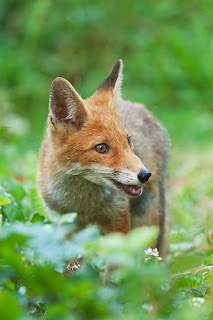Getting ready for any trip always involves gear preparation.
For me that starts with getting all the bits and pieces that I need together in one place and sorting out what bags I need.
Then I make sure I get all my batteries charged and then on to the cleaning.
I use a number of methods. Firstly, I get the blower brush and the Rocket blower and I clean the area around the lens cap, at the rear of the lens. This little area can harbour all manner of dust that is waiting to get onto the rear element of the lens and then ultimately into the body and the sensor.
Then I remove the cap and clean the inside of it - another dust trap that is easily overlooked. An inspection of the rear element and a clean if required with the blower. I never use compressed gas to clean - I don't want any liquid propellant in the wrong places.
I also do the same with the body cap that is on the camera body.
I then check the front elements of the lens themselves. I do not use front element filters, unless I am in dirty, dusty or sea spray environments. So a quick look tells me whether I need to clean. Again blower and if friction is required, I use a Lee Filter cloth, and their cleaning fluid if required.
The outsides of the lenses and bodies are cleaned with a small brush and the wand of the Dyson vacuum cleaner held just off the item to take away the dust.
A clean lightly dampened cloth is then used to wipe the external surfaces down on my L lenses.
One other point if you use the neoprene lens coats - take them off from time to time and also give a thorough clean - grit, dust and sand can get trapped behind and caused more damage than they are designed to prevent.
So finally to the sensor. One of the benefits of the latest breed of bodies is the self cleaning sensor, and the 1Dmk111 has been excellent in this respect........that plus it has been back to Canon a few times means it gets cleaned there, although I would have preferred that were not the case.
With a fully charged battery, the manual sensor routine is used and the
Visible Dust Arctic Butterfly 724 is used.
Be very careful with this as it is possible to smear shutter oil residues from within the chamber on to the sensor. I know as I did this on my old 5D and to my embarrassment on a friends 1Dmk111.
You will then need to clean the Artic Butterfly brush if that happens and you need to get the proper cleaning tablets from Visible Dust for that - but they do work. I think I was eventually forgiven for the 1Dmk111 mess up - as the camera got changed out in the AF issues
If you have got sticky crud on the sensor, then it is out with the Sensor Swabs (make sure you use the right size for your sensor) and the Eclipse E2 fluid - again very quick, very easy, and will take you longer to read how to do it than actually do it. Also make sure you get E2 rather than just Eclipse fluid for the more recent sensors (last three years) as it is correctly formulated for the tin oxide coatings used.
Finally, there is no point putting all your lovely clean kit back into a dirty bag. So take everything out, and vacuum it out. I take out all the dividers in either my Think Tank or Lowe Pro Photo Trekker, put the wand on the Dyson and give the bag a full clean out. Final wipe down externally with a clean damp cloth and you are ready.
So if you have dirty kit, now is the time.
Martin







































